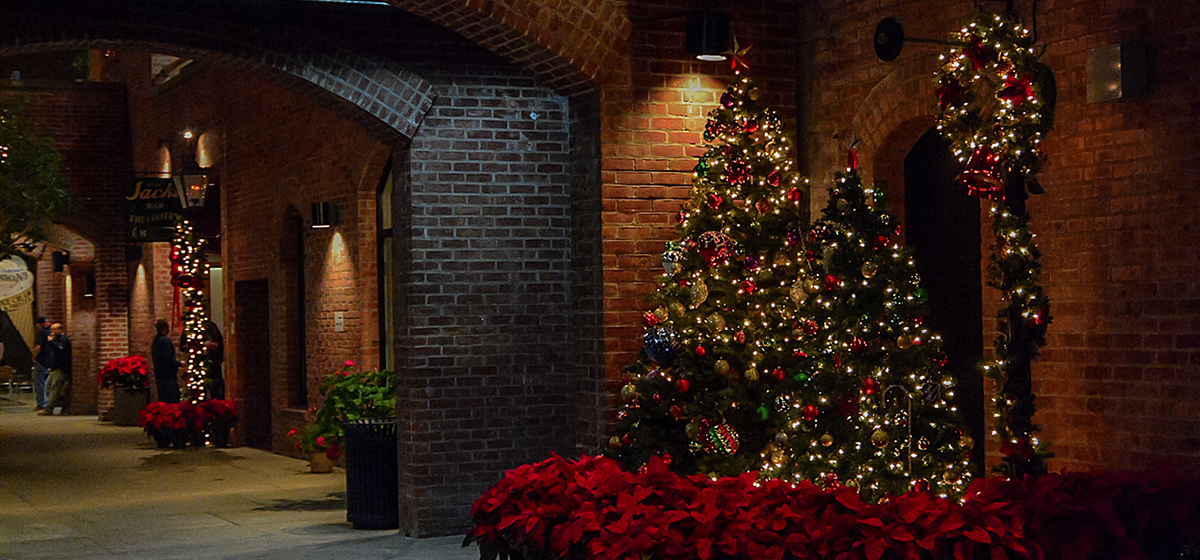In 1894, Galveston was one of the four largest cities in Texas and was a thriving center of culture and commerce. So when theatrical entrepreneur Henry Greenwald approached local businessmen with the idea of building a majestic opera house in the island city, he raised the needed $100,000 (an estimated $11 million present-day equivalent) in just one day. Even in 1894, says Maureen Patton, executive director of The Grand 1894 Opera House, locals recognized that it made good business sense to construct a complex where locals and out-of-towners could gather to enjoy performances by esteemed actors, dancers, orators, and musicians.
“They got their inspiration from theater,” she says. “They got their entertainment and their social connections. The Grand was the place to be.”
Just six years later, however, “The Great Storm” hit the booming city of Galveston. About a third of the island’s buildings were destroyed, and it is estimated that over 6,000 people lost their lives in the storm. The hurricane of 1900 remains the deadliest natural disaster in U.S. history. The opera house remained standing, but it sustained major damage—the back wall and roof were blown away, as was the stately cupola that sat atop the roof. Although the surviving residents of Galveston lost much in the storm, The Grand was destined to be restored.
“I think the community needed a place of public assembly and, maybe for a few moments,to forget about the horror of that storm—or maybe to weep together, but to seek strength in numbers in a facility that spoke of art and beauty,” Patton says. The Grand opened again just 13 months after the hurricane. “It was extraordinary,” she says.
In the parlance of the era, a “grand” opera house had a performance hall with a fly space above the stage so that backdrops could be raised and lowered, plus dressing rooms for men and women, permanent stage lighting, an orchestra pit, and a secure box office. In addition to a theater, The Grand 1894 Opera House had a hotel, restaurants, and shops. It had both electric and gas lighting, Patton says, because locals weren’t convinced that electricity would remain in use.
Over the years, many memorable performances were held at The Grand. John Philip Sousa brought his band to play marches, and Russian ballerina Anna Pavlova danced. The Grand also featured Polish pianist Paderewski and American legends Mae West, George M. Cohan, and the Marx Brothers.
“This was a place where people got dressed up and went to the theater,” Patton says. “It was a major performing center in the area.”
In 1924, A. Martini purchased The Grand. He converted it to a movie and vaudeville house named The Martini, and later changed the name to the State Theater. Over time, the theater gradually lost its allure and was plagued by poor attendance. When it closed in 1974, a victim of neglect, there was already interest in restoring the once-majestic theater. Just a few blocks away, The Strand was being revitalized. In this spirit of rejuvenation, a 12-year, $8 million project to restore The Grand began. It was completed in 1986, and The Grand 1894 Opera House was re-dedicated.
While the theater was restored to its turn-of-the-century style, a few things were modernized. For one, Patton says, The Grand once seated 1600 (including servants’ bench seating in the balcony); today the theater has 1040 individual seats. There were originally 8 boxes; today there are 12. (Box seating, according to Patton, has always been popular, even though patrons have obstructed views of parts of the stage. In the early years, she says, people sat in the boxes “to be seen, not to see.”)
One thing that did not need to be changed was the theater’s acoustics. The Grand has a round design, so there are no areas where sound can be trapped. “When they built these older theaters,” Patton says, “they simply had an instinctive kind of understanding of what good acoustics is all about. Back in 1894, what they used were their ears.”
Perhaps because of the size of the theater and perhaps partly because of its excellent acoustics, people in every seat in the theater—even the balcony—can hear what’s happening on stage. “You can carry on a conversation from the stage to the top of the balcony,” states Patton.
The newly-restored theater operated in much the same way it did at the turn of the century, when high-profile performing groups performed at The Grand, as did local groups (such as a barbershop quartet). The Grand attracted audiences not only from Galveston, but people who traveled from outside the island city, too.
“That is exactly what we are doing today,” Patton claims. The Grand hosts famous performing artists from throughout the country and the world, and also rents the theater to local organizations for smaller performances and events. Approximately 80 percent of theater-goers, she says, travel to The Grand from cities other than Galveston.
After the catastrophic loss of life in the hurricane of 1900, Galvestonians banded together to construct a 17-foot seawall and to raise the height of the city by bringing in 25 million cubic yards of fill dirt. In 1915, another major hurricane brought 21-foot waves to Galveston, but the city sustained far less damage than it did in 1900. The Grand was still in business. The Grand also survived Hurricane Carla in 1961 and Hurricane Alicia in 1983.
The Grand was scheduled to open for its 2008-2009 season on September 13, 2008, but an event of farther-reaching consequences took place instead. Hurricane Ike made landfall near Galveston, and The Grand sustained over $6 million in damage. Flood waters covered the seats in the first 12 rows of the first level; the nine-foot Steinway grand piano in the orchestra pit was lost. A tornado within the hurricane peeled off the roof, resulting in more water damage.
Two weeks after Ike’s passage, Patton met with a contractor who had been hired before the hurricane to make capital improvements to The Grand. When she told him that she’d like to reopen on January 3, he asked her, “What year?”
“I told him, ‘After the 1900 storm, it opened in barely over a year. We are going to do better. We are going to serve the same purpose. This city needs The Grand. We need performances so people can come from out of town. We don’t have to be finished—we just have to be ready.’” The contractor agreed, and Patton began working to compress the 2008-2009 season.
On January 3, 2009, amid much media attention, over 2,000 people came to The Grand to celebrate the theater’s 114th anniversary. Jerry Jeff Walker performed to a sold-out audience, and The Grand was back in business again.
“I think it was an absolute recurrence of 1900 in many respects,” said Patton.
Today, the legend of The Grand continues. It is one of the few remaining theaters in Texas from its era; in 1993, the 73rd Texas Legislature made it the Official Opera House of Texas. It is listed in the National Register of Historic Places.
The Grand hosts more than 35 annual performances, including drama, musicals, dance, opera, and programs for children. In recent years, such noteworthy artists as Willie Nelson, Ray Charles, The Gatlin Brothers, and Helen Hayes have performed at The Grand. The history of the theater, plus the intimacy of the venue, makes it a favorite among performers. Many have complimented The Grand from the stage.
“Larry Gatlin once said, ‘We could feel the heartbeats out there,’” says Patton. “In some ways, you feel the ghosts who have gone before. The actors have a sense of the history, so it becomes a very unique place for them and something that inspires them to do their work.”
Audiences also love the intimacy of The Grand. Whether patrons choose the orchestra level, the mezzanine level, the grand tier (balcony), or one of the boxes that were so prestigious in the past, they are never more than 70 feet from the stage.
In the coming months, The Grand will feature Emmy award-winning comedienne Vicki Lawrence (who will also perform in her alter ego as “Mama”), and Dr. John & the Nite Trippers, who will share the stage with Aaron Neville. The Grand will celebrate its 120th birthday in January 2015.
Just as it did when it opened for its first performance on January 3, 1895, The Grand 1894 Opera House still delights locals and attracts out-of-towners to the island city. In a world of constant change, some things always seem to stay the same.
The Grand is located at 2020 Postoffice Street, Galveston.
(800) 821-1894 www.thegrand.com



